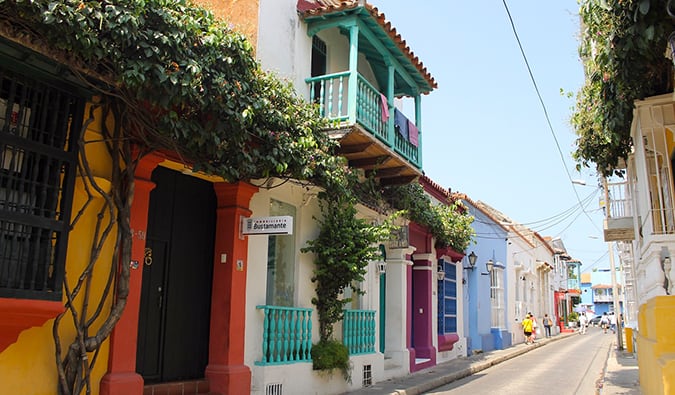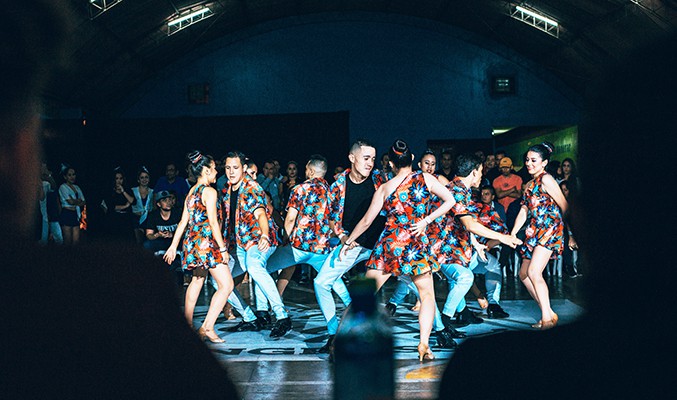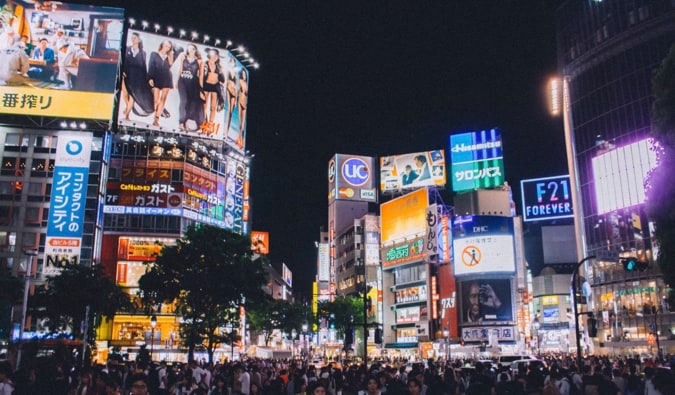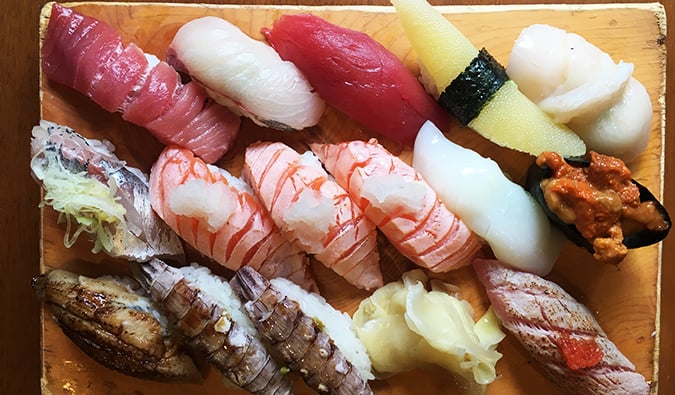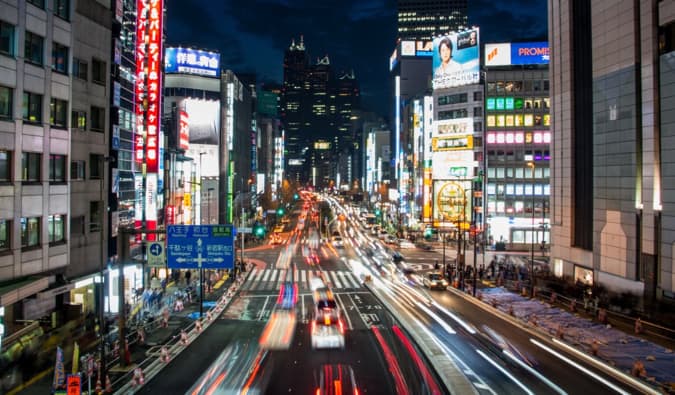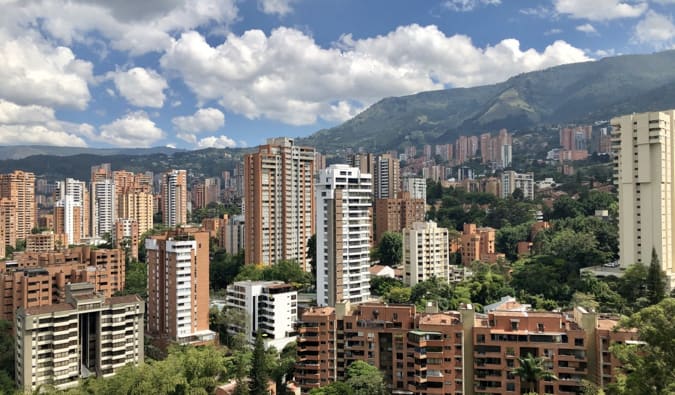
Posted: 04/19/2019 | April 19th, 2019
Once considered one of the deadliest cities in the world, Medellín has undergone a transformation over the last fifteen years that has made it one of the most modern places in all of Colombia.
The city has become a lot safer, there is a fantastic metro and cable car system that could rival the best in Europe, lots of parks, new buildings, libraries, restaurants, and a growing tech scene.
The city has changed a lot, and you can tell the residents are very proud of everything they’ve accomplished. There’s a palpable sense of possibility in Medellin. Optimism and excitement were always in the air.
Medellín is now one of “it” cities in the world. Tourists swarm it, and foreigners (especially young digital nomads) are settling and retiring here in droves. It was the most cosmopolitan and international city I visited in Colombia.
I spent close to a total of three weeks in Medellín.
If you’re looking to visit Medellín (and I don’t see why you wouldn’t be if you’re in Colombia), here is a list of my favorite things to do and see after spending so much time there:
1. Explore the Numerous Parks and Plazas

Medellín’s year-round temperate climate makes it a perfect place to spend a lot of time outdoors, where people are always lounging around and vendors are peddling food and drinks. Two must-visit parks are:
- Plaza Botero – Botero was a famous artist from Medellin known for his drawing and statues of oversized people. This plaza is home to 23 Botero sculptures and is always packed with people taking photos, street performers, and artists. Located in the Old Quarter, you’ll find a couple of museums in the square too.
- Parque Lleras – Located right in the center of Poblado, this park is full of people all day and night. There are street vendors, food sellers, musicians, and people drinking into the wee hours of the night. It’s a wonderful place to people-watch and one of the best places to have fun in the city!
2. Wander Parque Arvi

This park is worthy of its own entry. Located in the mountains near the city, you can take the gondola right from the subway to the park’s entrance. It’s a beautiful ride through the hills and offers some incredible views of the valley and city.
The park spans 16,000 hectares and includes trails that date back over 1,500 years. At the park entrance, you’ll find a small market as well as trails to hike. To visit, you now have to take a guided tour. It costs 5,000-7,000 COP ($1.50-2.25 USD) depending on the trail (most trails are 2-4km long). Bird-watching tours are also available.
3. Explore Jardín Botánico

The botanical gardens, a quiet retreat from the noise and chaos of the city, host numerous events, concerts, and festivals throughout the year. They cover over 14 hectares and are home to around 4,500 flowers and some 139 different bird species.
There’s also a nice (if not overpriced) restaurant in the center if you feel like spending more time here relaxing and taking in the scene.
4. See a Soccer Match

Soccer (futbol) here is religion and, if there are games when you’re here, you should really try to see one. Medellín has two local teams: Atlético Nacional and Independiente Medellín. Supporters of each team occupy bleachers at opposing ends of the stadium since things tend to get rowdy and violent when they are near each other. Ticket prices are well under 40,000 COP (under $12.50 USD).
5. Take a Day Trip to Guatapé

Guatapé is the most popular day-trip destination from Medellín. It’s a colorful pueblo (village) situated on the edge of a lake about two hours from town, and it’s possible to take tours of the surrounding area by speedboat or party boat (which is very popular with backpackers who spend a night or two here).
The main attraction is El Peñol, a granite monolith with over 700 concrete stairs etched in its side. For a few thousand pesos, visitors can climb to the top for breathtaking 360-degree views of the region.
Guatapé is a long day trip from Medellín (hostels in the city organize trips throughout the week), so I recommend trying to spend at least a night here so you aren’t rushed and can enjoy the area little more.
6. Take a Free Walking Tour

One of my favorite things to do when I get to a new city is to take a free walking tour. They’re perfect for getting an overview of a place while giving you access to a local expert who can answer your questions.
Real City Walking Tours has a great free tour that will give you an informative introduction to the city. Don’t do any other tours; this is the only free walking tour you need, and it’s the best in town. You’ll get a lot of information, and the guides are wonderful. Be sure to tip at the end!
7. Tour Comuna 13

This area was once the most violent part of Medellín. Murder, drugs, and violent crime were rampant (it’s still not a safe area to visit at night). You used to have to go through guards to get into this area; if you didn’t live here, you weren’t let in.
However, thanks to its street art (which was a reaction to heavy-handed police raids) there has been a huge influx of tourists. That has made part of the area safer and led to a rise in business and commerce. It’s really changed the fabric of the community. Local residents are even coming here now, figuring that if the tourists are going, it must be good!
You can visit by yourself or go on a tour (where a guide will explain the history of the area and the artists). Some of the better tour companies are:
8. Visit the Museo de Antioquia

Founded in 1881, this interesting museum is home to numerous pre-Colombian works as well as national and international works by famous artists (there are a bunch of Boteros here too) and a wide variety of photographs and sculptures.
Cl. 52 #43, +57 4-251-3636, museodeantioquia.co. The museum is open Monday-Saturday 10am-5:30pm and Sundays 10am-4:30pm. Admission is 18,000 COP ($6 USD) per person.
9. Wander the Cementerio Museo de San Pedro

Built in 1842, this cemetery is also a museum where you can see the monuments and graves of many famous Colombians while learning about their lives and contributions. There’s a lot of large marble mausoleums and statues here. Keep an eye out for special events such as midnight tours and movie nights. The cemetery is small but it’s also close to the botanical gardens so you can do both one after the other.
Cra. 51 #68-68, +57 4-516-7650, cementeriosanpedro.org.co. Open daily 7:30am-5:30pm. Admission is free.
10. See the Casa de la Memoria

This museum opened in 2012 and examines the history of armed conflict in Colombia. It sheds light on the struggles the people of Colombia have had to overcome to get where they are today.
It’s a very sobering and solemn place but it offers some important insights. Don’t miss it.
Parque Bicentenario, +57 4-520-2020, museocasadelamemoria.gov.co. Open Tuesday-Friday 9am-6pm and weekends 10am-4pm. Admission is free, and there is also a free audio guide you can download. Guided tours are available on Tuesdays and Fridays. Contact the museum for details.
11. Visit the Museo de Arte Moderno

The Museum of Modern Art, located in a refurbished industrial building, is an awesome work of art in itself. There’s a ton of exposed area, giving it a really charming feel. Many people have a love-hate relationship with modern art (it’s not my personal favorite, I admit) but even I enjoyed my visit here.
The collection is small, but there’s also a beautiful photography section on the bottom floor. Even if it’s not your thing, it’s worth spending a couple hours here to get a sense of the modern art scene in the city.
Cra. 44 #19a-100, +57 4-444-2622, elmamm.org. Open Tuesday-Friday 9am-6pm, on Saturdays 10am-6pm, and Sundays 10am-5pm. Admission is 12,000 COP ($4 USD) per person.
12. Take a Food Tour

If you’re looking to taste a sample of what Medellín™ has to offer, there are a couple of food tour companies that can help. It’s a great way to get a taste for the local cuisine while learning about the country’s traditions in the process. There are plenty of options, such as street food tours from Toucan Café or more traditional local restaurant tours from Medellín City Tours. Both are good options!
Expect to pay 143,000-286,00 COP ($45-90 USD) per person.
13. Visit a Microbrewery

If you find yourself parched after an afternoon of sampling the city’s delicious cuisine, consider taking a brewery or craft beer tour to quench your thirst. There is an up-and-coming craft beer scene in Colombia, and Medellín has over 30 breweries and microbreweries. These are some of the best places to try a local beer:
- 3 Cordilleras runs tours Thursday and Friday evenings, offering five samples for 25,000-30,000 COP ($8-10 USD) per person.
- Cerveza Premium Apóstol has a tour every Thursday at 6:30pm where you can see the brewery, taste a few drinks, and enjoy a snack in the process. Advanced booking is required, and tickets are 35,000 COP ($11 USD) per person.
- 20 Mission Cerveza has great beer, great food, and it’s a fun place to hang out and meet people. They don’t offer tours, but they do host music events and DJs. It’s super popular and one of the best places in town to grab a beer.
- Brew House is a family-owned-and-operated brewery where you can take a tour and sample the offerings alongside their full pub menu.
- Medellín Beer Factory doesn’t offer tours, though it does brew its own beer, with over 50 kinds on the menu! It’s a great place to relax with friends.
14. Visit Comuna 8

Much like Comuna 13, this area was one of the poorest in Medellín — and it still is. This district was really isolated until the city built a gondola from downtown, allowing people to get to work a lot more easily.
La Sierra runs a tour to teach people about the history of the area, and, unlike Comuna 13, it’s not overrun with tourists. It’s a small district and the tour doesn’t last long, but you get a much more authentic look at the city and its people and history than you do in Comuna 13 (where the focus is more on street art). I highly recommend it; it was one of the most insightful experiences I had in Medellín.
Finally, Don’t Do the Escobar Tour!

The locals here are not fans of Pablo Escobar. His violent life and legacy caused untold amounts of harm to the city and its population, and while it’s always good to learn about the history of a destination, glorifying this is not something I want to support. You can learn about his life online in a way that doesn’t spit in the face of the locals, many of whom don’t even speak his name. Out of respect for them, I encourage you to skip the Escobar tour.
Where to Eat in Medellín

I ate a lot in this city — and it was amazing! Here are some highlights:
- Mondongo – Traditional Colombian food in a relaxed atmosphere. Try the mondongo, a traditional tripe soup. It comes with a ton of side dishes (including giant avocados). Come early, as this place get packed. Try to avoid the weekend. (Cl. 10 #38-38)
- Carmen – High-end gastronomy with some of the best food in all of Colombia. It’s expensive but worth it. It was the best splurge meal I had in the country. (Cra. 36 #10a-27)
- Mercado del Rio – An awesome food court offering all sorts of delicious food from dozens of vendors. There’s something for everyone here. (Cl. 24 #48-28)
- 20 Mission – A great microbrewery with delicious food too! Try the IPA. (Cl. 16 #43f-66)
- Pergamino Café – A chill café with some of the best coffee in town. I spent a lot of time working here. They make great breakfast food, BLTs, and empenadadas. (Cra. 37 #8A-37)
- 37 Park – Another great bar and restaurant with a rustic outdoor garden. (Cra. 37 #8A – 4)
- Hatoviejo – This is one of the best places to get traditional Colombian food. It’s pricey when compared to some of the hole-in-the-wall restaurants you’ll find throughout town. (Cl. 16 #28-60)
I was never bored in Medellín. In a country full of hype, this hyped-up city is all that it’s cracked up to be. It has enough activities to fill weeks on end. Combined with the low cost of travel and living, it’s no wonder more and more people are visiting the city.
This guide can help you plan your trip. And while it’s easy to get lost in Gringoland here, try to get out of Poblado or Laureles and see the locals’ side of town.
That’s where the magic of Medellín happens.
Book Your Trip to Colombia: Logistical Tips and Tricks
Book Your Flight
Find a cheap flight by using Skyscanner or Momondo. They are my two favorite search engines, because they search websites and airlines around the globe, so you always know no stone is being left unturned.
Book Your Accommodation
You can book your hostel with Hostelworld. If you want to stay somewhere other than a hostel, use Booking.com as it consistently returns the cheapest rates for guesthouses and cheap hotels. I use it all the time. Here are suggested places to stay in Medellín:
- Los Patios: This is an upscale hostel, but you get a lot of value. It’s in a great location and the staff are awesome. It’s always clean and the beds are comfy!
- BlackPine: This hostel has a laid-back vibe and an amazing kitchen for anyone planning to do their own cooking. There are plenty of electrical outlets and some great hammocks for relaxing!
Don’t Forget Travel Insurance
Travel insurance will protect you against illness, injury, theft, and cancellations. It’s comprehensive protection in case anything goes wrong. I never go on a trip without it, as I’ve had to use it many times in the past. I’ve been using World Nomads for ten years. My favorite companies that offer the best service and value are:
- World Nomads (for everyone below 70)
- Insure My Trip (for those over 70)
Looking for the best companies to save money with?
Check out my resource page for the best companies to use when you travel! I list all those I use to save money — and I think they will help you too!
Looking for more information on visiting Colombia?
Check out my in-depth destination guide to Colombia with more tips on what to see and do, costs, ways to save, and much, much more!
Photo credits: 2, 3, 4, 5, 8,9, 10, 11, 12, 13, 14, 15, 16, 17, 18, 19
The post The Ultimate List of Things to Do in Medellín appeared first on Nomadic Matt's Travel Site.


